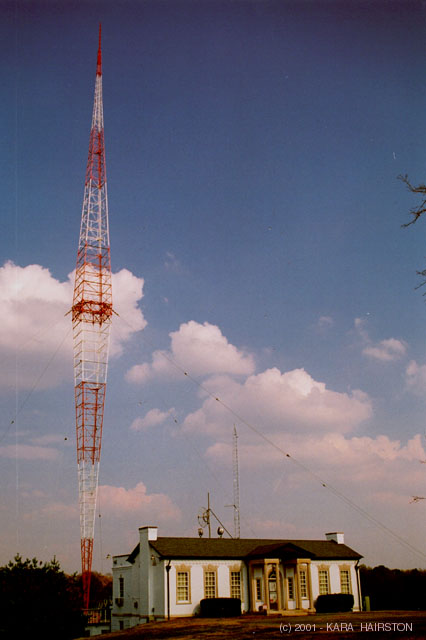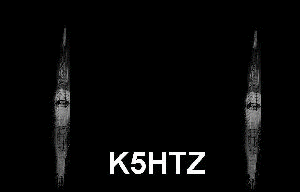
| MUSEUM OF YESTERDAY |


Radio Related Links |
from OTR.net |
COMMUNICATIONS HISTORY GALLERY 1
ANTIQUE PHONOGRAPH COLLECTION
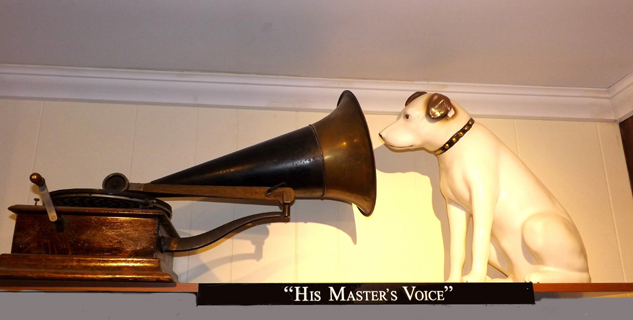
 |
Any discussion of radio, particularly when it involves the radio as a home entertainment and information device, must of course begin with a brief history of the Phonograph. The phonograph was, after all, the first in a still evolving line of what we consider "technological" entertainment and information inventions to enter the American home. In 1877, Thomas Edison invented his tin-foil phonograph. The word "phonograph" was registered as Edison's trade name for his invention, which played recorded sounds from round cylinders. The sound quality on the phonograph was poor and each recording lasted for only one play. Edison's phonograph was followed by the graphophone, which was developed by Alexander Graham Bell.. The graphophone played wax cylinders which could be played many times. Each cylinder had to be recorded separately making the mass reproduction of the same music or sounds impossible with the graphophone. On November 8 1887, Emile Berliner, a German immigrant working in Washington D.C., patented a successful system of sound recording. Berliner was the first inventor to stop recording on cylinders and start recording on flat disks or records. The first records were made of glass, later zinc, and eventually plastic. A spiral groove with sound information was etched into the flat record. The record was rotated on the gramophone. The "arm" of the gramophone held a needle that read the grooves in the record by vibration and then transmitted the vibration information to the gramophone's acoustic speaker. Berliner's disks (records) were the first sound recordings that could be mass-produced by creating master recordings from which molds were made. From each mold, hundreds of disks were pressed. So while Thomas Edison is often credited with the invention of the phonograph, it was actually Emile Berliner who perfected the common disk recording method that we associate with the phonograph today. |
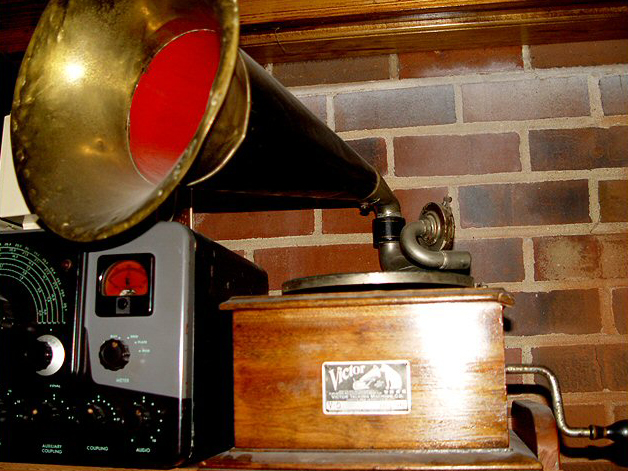
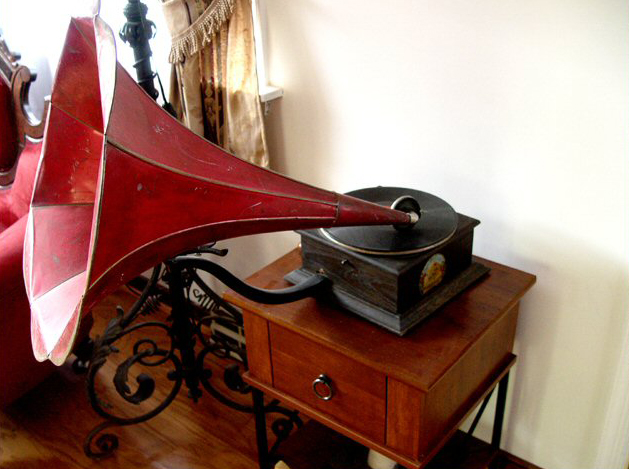
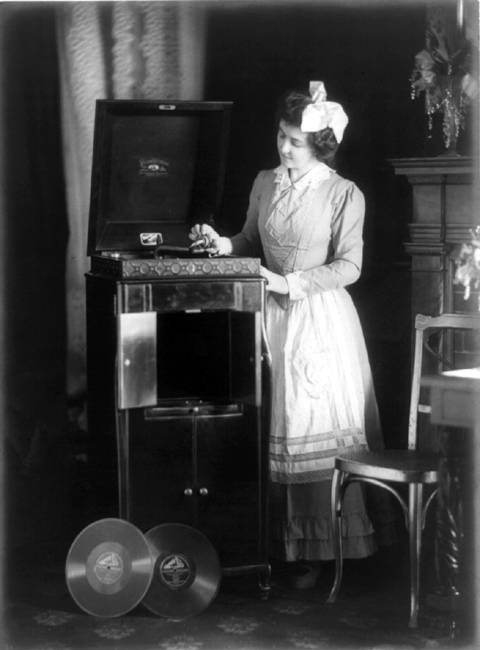
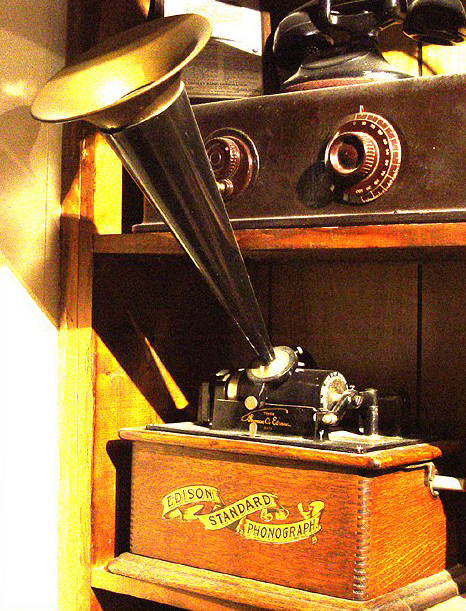
Edison "Standard" cylinder phonograph with brass horn is one of Edison's first commercially sold models.
Although Edison's early attempts at recording sound employed tin foil as a recording medium, his company later acquired the use of wax cylinder recording which had originally been pioneered by Alexander Graham Bell.
 |
THE GREAT EDISON-WESTINGHOUSE RIVALRY |
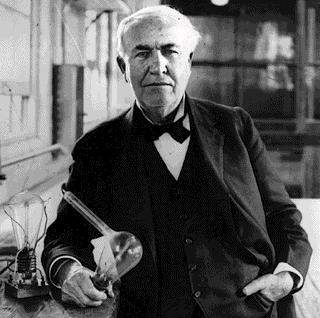
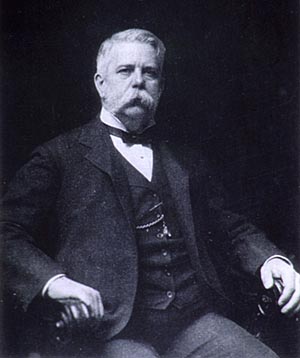
Thomas Edison, despite being credited as one of the great inventors of the Industrial Age, was a ruthless man who was more interested in protecting his business interests than he was in advancing Science. His arch-rival, George Westinghouse, while a brilliant business man, was a more benevolent soul when it came to the marketing of his inventions. The great "rivalry of the currents" came as a result of Edison trying desperately to protect his electric light bulb, and the direct current generation system that he had pioneered to power it.
When Edison developed his carbon filament lamps, he settled on a system of power generation using direct current. As his system expanded across New York, Edison found that large drops in voltage were the norm, so in order to power a large area, numerous DC generating plants were needed. There was no way to step up and transmit DC current for long distances with transformers, as is the case with alternating current, because an inductive device such as a transformer, is a direct electrical short to DC current.
Meanwhile, Nicola Tesla, a Russian Physicist, had discovered that by generating current which continually changed polarity, that transformers could be applied to step up the generated voltage so that it could be transmitted long distances. Electrical pioneer George Westinghouse realized the value of Tesla's discovery, and he teamed up with Tesla to pioneer a system of alternating current transmission using generators and transformers which his Westinghouse Electric Company produced.
Edison, who now was facing a threat of not only Westinghouse-Tesla's superior transmission system, but also Westinghouse's developments which circumvented Edison's light bulb patent, became desperate. He undertook a marketing campaign to smear the Westinghouse name by declaring that Westinghouse's alternating current was dangerous. The campaign first involved movies, using Edison's motion picture camera invention to document the deliberate electrocution of dogs, horses and other animals using current from a Westinghouse generator. The most famous of these was the electrocution of Topsy, a rogue elephant who had been responsible for the death of several of his keepers. Finally, Edison was able to convince New York State to utilize Westinghouse's alternating current electricity in place of hanging for the execution of Capital criminals. The first execution by electricity was a grim and botched effort wherein the prisoner suffered great pain before being successfully executed. Edison coined the term "Westinghousing" of the prisoner in order to cast further shame on his business rival.
Despite all efforts by Edison, the Tesla-Westinghouse system of power generation was superior to Edison's, and it eventually became the standard for electric utilities around the world. On the other hand, Edison's electric chair was used almost universally as a method of Capital punishment in the United States throughout most of the 20th Century.
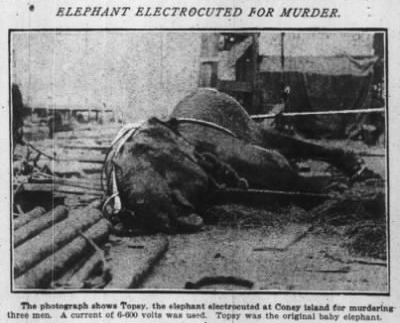
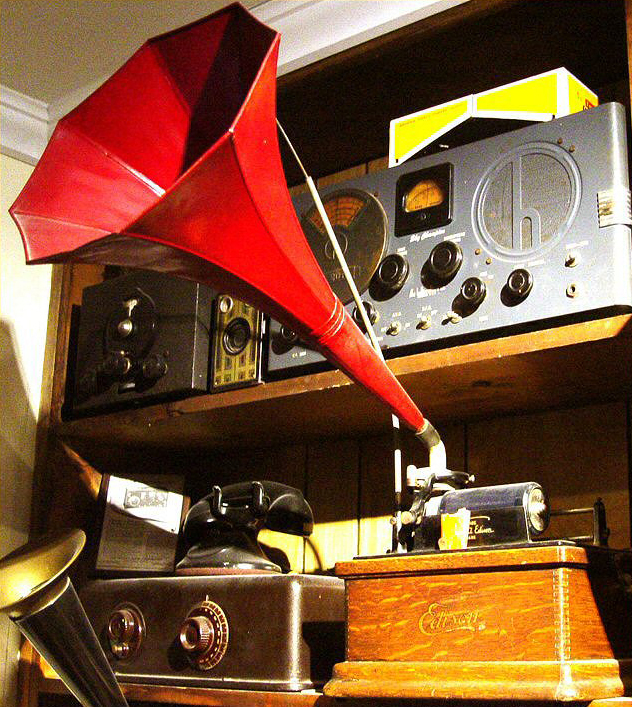
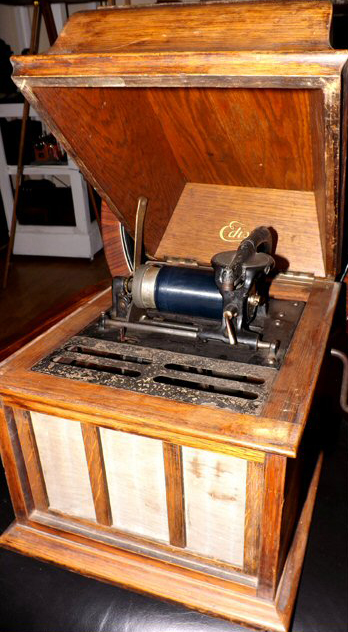
An Edison Amberol cylinder phono with internal sound horn.
This model was considered an improvement on the external horn phonographs, and the design set the stage for most mechanical phonographs built through the 1940s. The last all mechanical phonographs manufactured in the United States were made in the late 1940s and were predominantly intended to be children's toys.
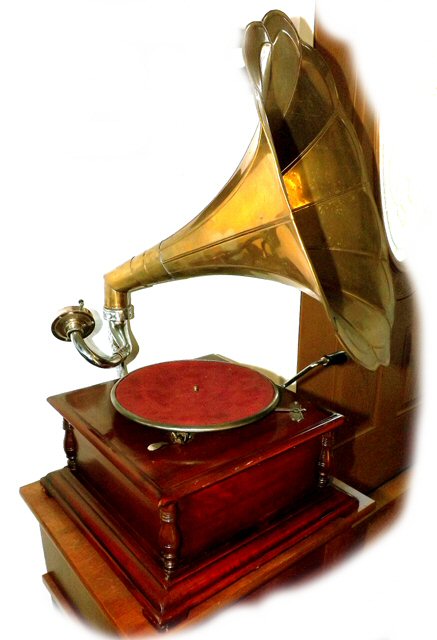
The "Victor Talking Machine" above closely resembles an early 1900s model Berliner machine. Antique experts viewing this will probably recognize it as a well-done modern day fake that was made by a company in India. We are showing it as a warning to collectors that some really authentic looking but fake phonographs and radios are being made overseas and sold in America. Labels attached to these machines are often exact copies made from the original manufacturers' printing dies, which makes them even harder to identify.
Likewise, the photo below shows two very similar radios. The one on the left is an authentic 1939 Zenith model 6D-312 which was a very popular radio in its day, and highly sought by collectors. The one on the right is a transistorized modern day fake that was manufactured in the late 1990s, and has little or no value. To an inexperienced purchaser, the radio on the right could be easily mistaken for the real thing. Original Zenith 6D-312 sets are sought after, and examples have recently sold for well over $500 in EBAY auctions, so an unsuspecting collector could get easily burned if they don't know the distinguishing features of the antique.

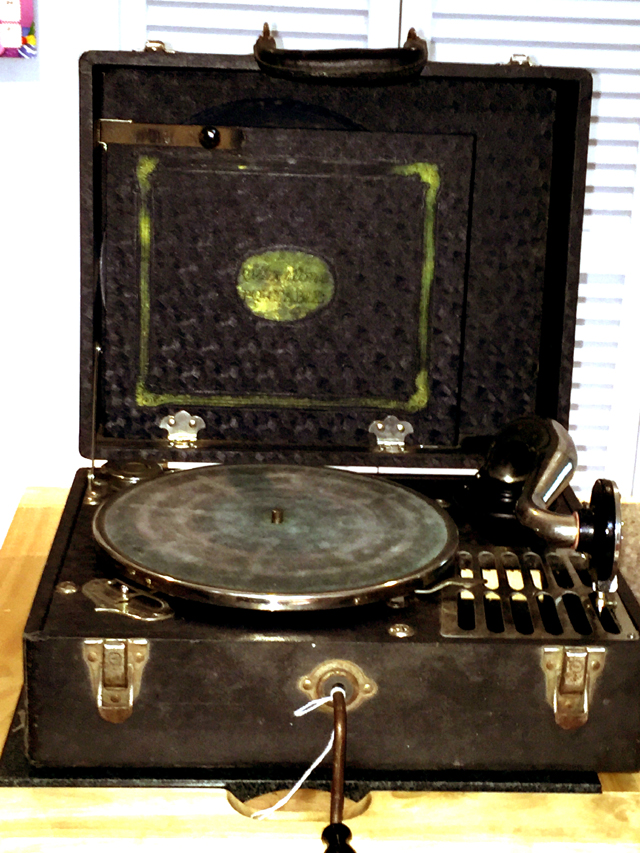
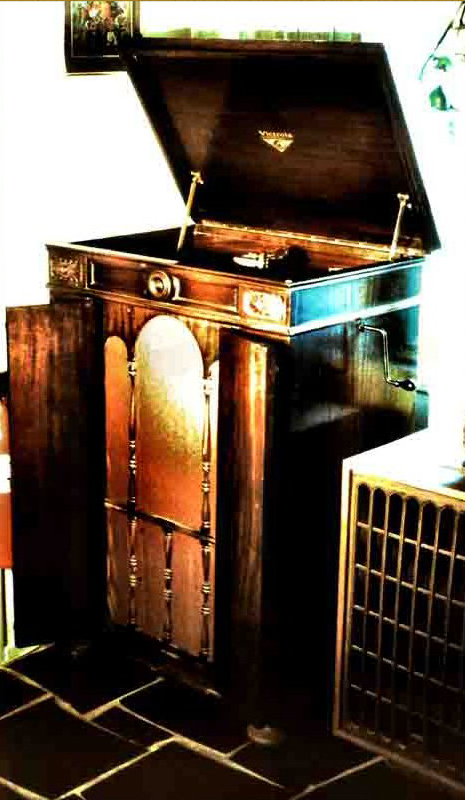

This is a Vanity Fair child's acoustic phonograph made in the early 1950s.
By the 1940s, electronic phonographs had all but replaced the classic acoustic "Victrola." A few acoustic phonographs were still being produced, but these were mainly children's toy phonographs designed to play specialty recordings of nursery rhymes and children's songs. The United States Navy and Coast Guard, however, continued to purchase acoustic phonographs as field training devices through the end of the Korean War. The services still believed that the acoustic phonographs were extremely reliable in the field, and not as subject to electronic failures common to more fragile electrical pickup type instruments. The manufacture of acoustic phonographs in the United States ceased in the mid-1950s.
 |
Ok, now that I have shown you the first generation of home entertainment devices, we move on to the next gallery where you will see the story of the Telegraph. Early telegraphy played an important part in the establishment of basic long-distance communications, and so it was an integral part of the eventual development of the radio-telegraph and subsequently modulated wireless sound transmissions. |
Copyright 2023, The Museum Of Yesterday


